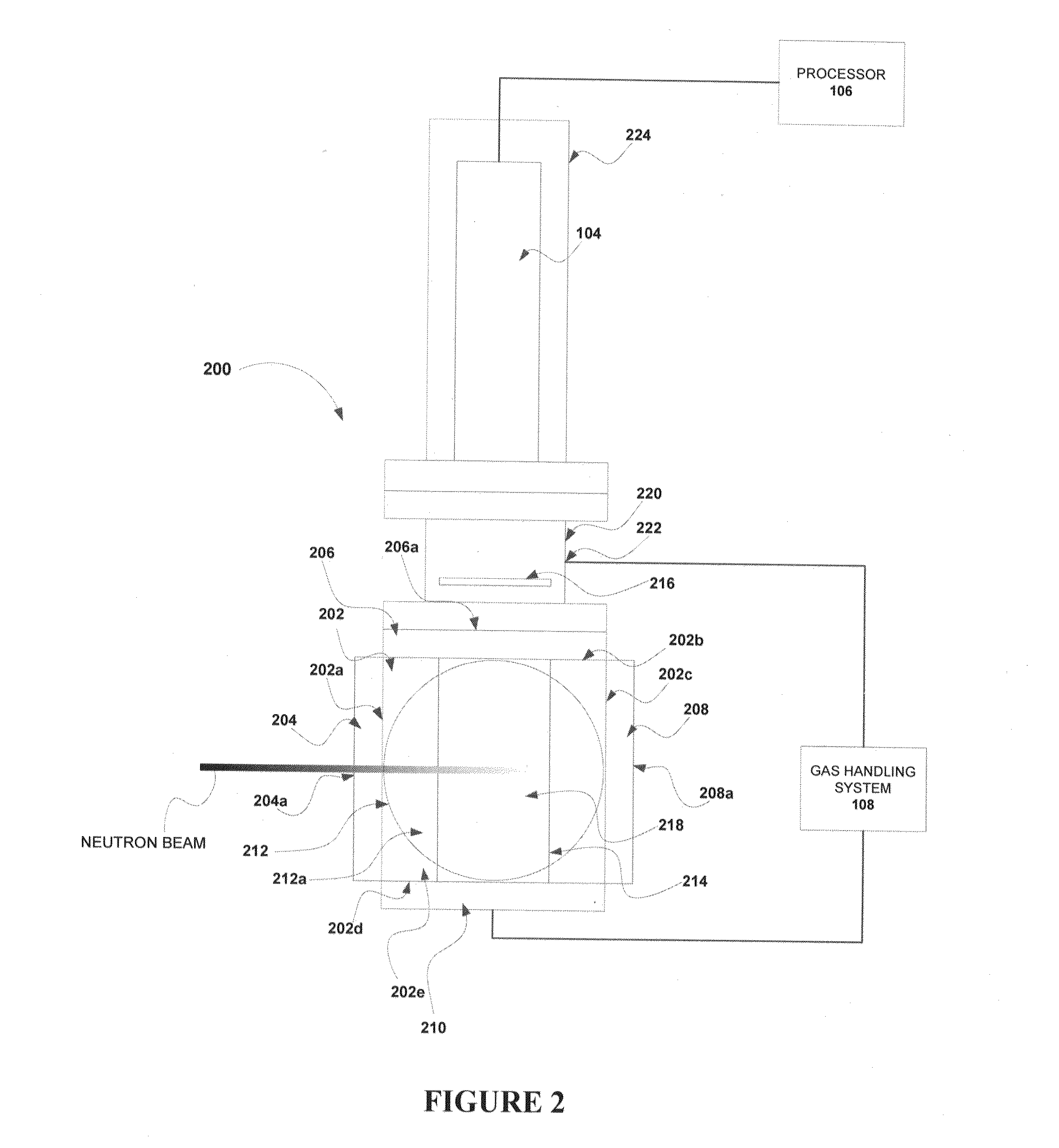Noble-gas-excimer detectors of slow neutrons
a neutron and gas detector technology, applied in the field of radiation detection, can solve the problems of limited counting rate, wall effect, microphonic noise, etc., and achieve the effect of large-scale deploymen
- Summary
- Abstract
- Description
- Claims
- Application Information
AI Technical Summary
Benefits of technology
Problems solved by technology
Method used
Image
Examples
example 1
[0053]Far-ultraviolet signatures of 3He(n,tp) reaction in noble gas mixtures.
[0054]Trigger reaction of 3He(n,tp) process, in which a neutron reacts with a 3He nucleus to produce a proton and a triton with excess energy of 764 keV, is used to initiate far-ultraviolet (FUV) optical emissions, rather than electrical discharges. At a 3He pressure of 100 kPa, tens of FUV photons are produced for every reacted neutron. When mixtures of Ar, Kr or Xe are added to the 3He cell, larger FUV signals were observed. These signals were larger than the ones observed when the cell contained only 3He and, in some cases, these signals were larger by factor of 1000. Using spectral analysis discussed below, this radiation was identified to be predominantly due to rare gas excimer (X2*) emissions.
[0055]The experimental apparatus consists of a gas cell, photomultiplier tube (PMT) detector and gas handling system connected to a turbo-molecular / molecular-drag pump backed by an oil-free diaphragm pump. The g...
example 2
[0063]Far-ultraviolet signatures of 10B and 6Li2CO3 films in noble gas mixtures.
[0064]Thin films of 10B and 6Li2CO3 on silicon substrates have been exposed to slow neutrons in the presence of Ar, and Xe. Though less efficient in terms of photons produced per reacted neutron, the films nevertheless produce thousands of photons per neutron reacted. FIG. 8 shows sample results from these experiments for a 20 μm film of 6Li2CO3 in 80 kPa of Ar and a 0.20 μm film of 10B in 80 kPa of Ar and Xe. There was also an observation of signals obtained with the cell was filled with a partial pressure of 28 kPa of 10BF3 and 52 kPa of Xe. Comparing the 6Li2CO3 and 10B film measurements with those for 3He in 80 kPa of Ar (FIG. 7), the 6Li2CO3 yielded 4,700±900 photons per neutron reacted in Ar compared to 10,000±2000 photons per neutron reacted for 3He in Ar at the same pressure. The 10B film yielded 21,100±4,100 and 21,500±4,700 photons per neutron reacted in Ar and Xe compared to 10,000±2,000 and 3...
PUM
 Login to View More
Login to View More Abstract
Description
Claims
Application Information
 Login to View More
Login to View More - R&D
- Intellectual Property
- Life Sciences
- Materials
- Tech Scout
- Unparalleled Data Quality
- Higher Quality Content
- 60% Fewer Hallucinations
Browse by: Latest US Patents, China's latest patents, Technical Efficacy Thesaurus, Application Domain, Technology Topic, Popular Technical Reports.
© 2025 PatSnap. All rights reserved.Legal|Privacy policy|Modern Slavery Act Transparency Statement|Sitemap|About US| Contact US: help@patsnap.com



